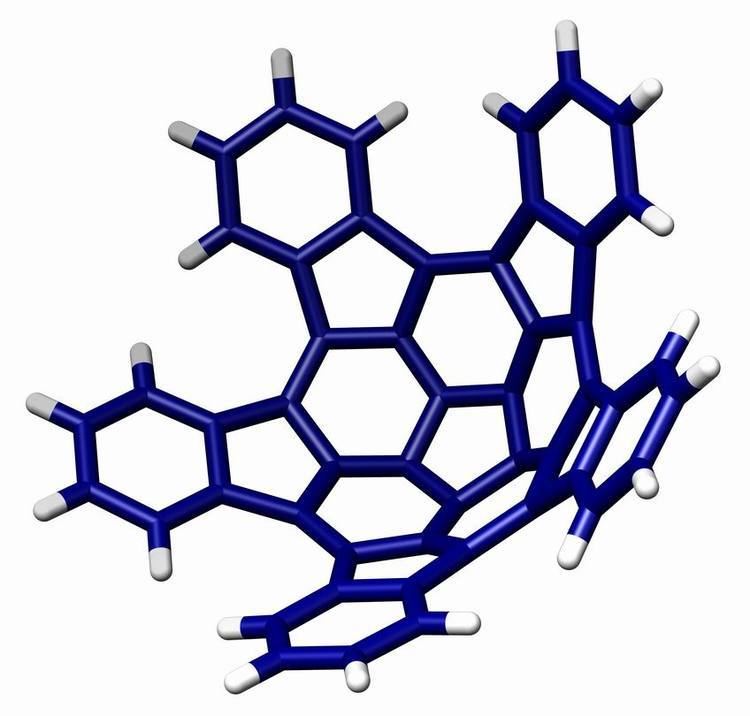 | ||
A geodesic polyarene in organic chemistry is a polycyclic aromatic hydrocarbon with curved convex or concave surfaces. Examples are fullerenes, nanotubes, corannulenes, helicenes and sumanene. The molecular orbitals of the carbon atoms in these systems are to some extent pyramidalized resulting a different pi electron density on either side of the molecule with consequences for activity.
One member of this group of organic compounds, pentaindenocorannulene (depicted below), can be considered a large fullerene fragment. The experimentally obtained curvature and degree of pyramidalizion (12.6° ) are both actually larger than that of fullerene but according to its discoverers the compound is relatively easy to synthesize starting from corannulene and a way is opened to produce larger such fragments by stitching.
Some bowl-shaped molecules reported in the literature are in fact partially hydrogenated. A C56H40 hydrocarbon has been synthesized containing 54 of the 60 carbon atoms found in fullerene
